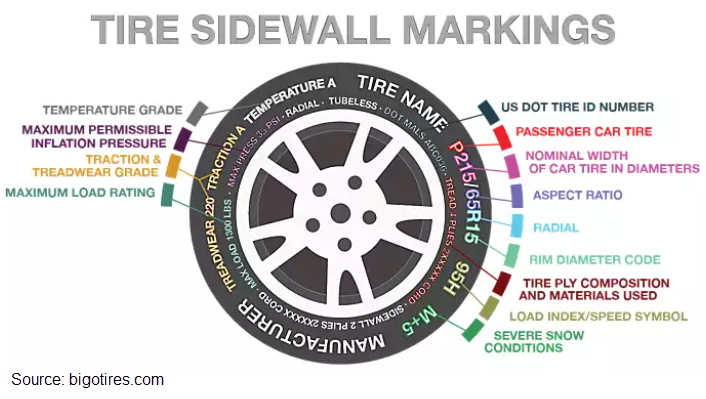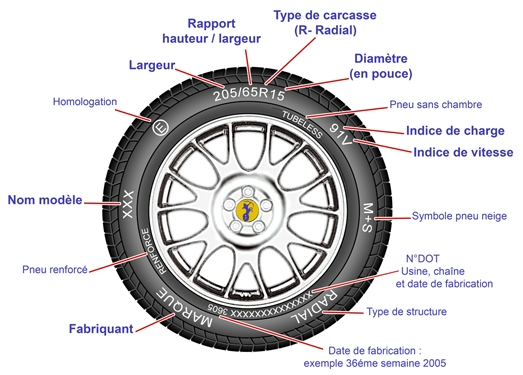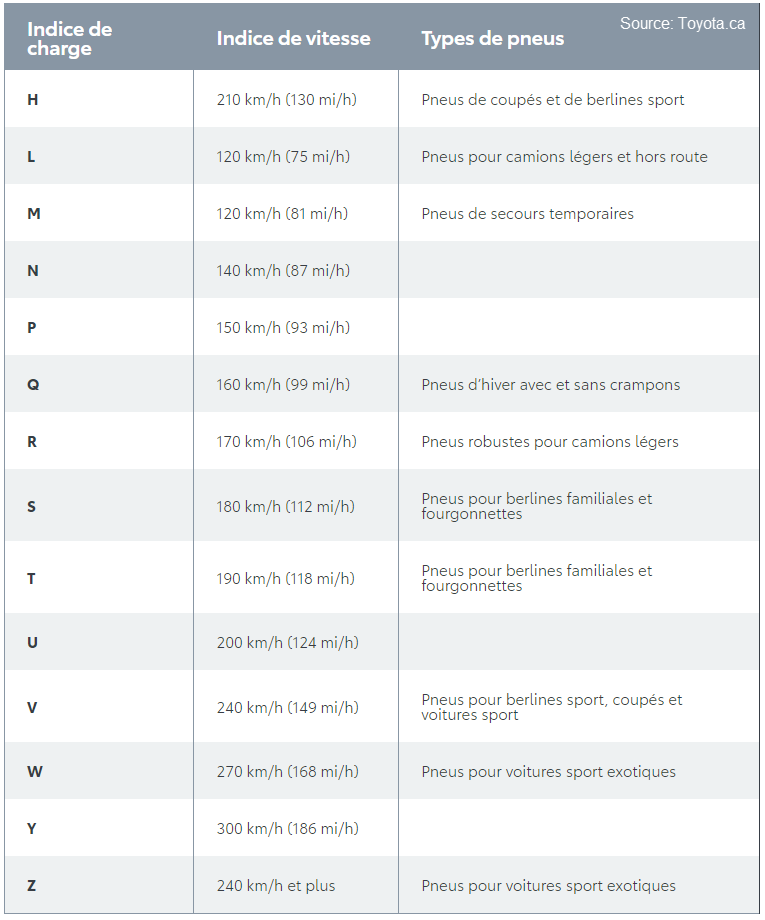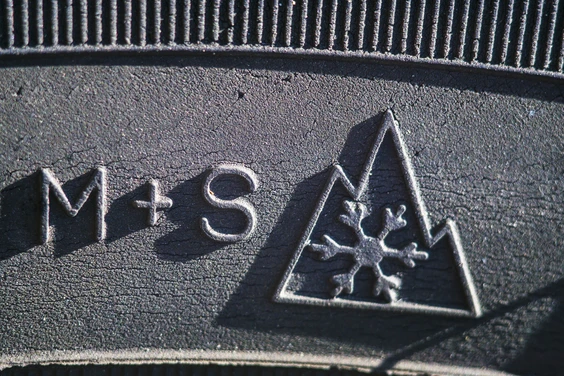
Tire symbols – Welcome to our comprehensive guide to mastering the art of choosing the ideal winter tires for your vehicle. In this article, we will dive into the often complex world of tire symbols and specifications, equipping you with the necessary knowledge to make an informed choice. Whether you’re facing the harshness of the Quebec winter or simply looking to optimize your car’s performance on dry roads, understanding what these markings mean is essential. Learn how to interpret load indexes, speed ratings, and much more, to ensure safety and efficiency on every journey. Get ready to become a tire expert and select the perfect road companion for your next adventure on the asphalt.
Guide to Tire Symbols: How to Read the Required Tire Width
Imagine yourself in front of your vehicle, contemplating the perfect tire fit. You don’t want your tires to be too tight, limiting their performance, or too loose, compromising your safety on the road. Just like finding the ideal pair of shoes, the perfect tire fit is about finding the width that suits your car’s driving style.
The width of the tires plays a crucial role in your driving experience. It affects stability, handling, and even energy efficiency. Choosing a tire width that is suitable for your car’s driving style is about finding the right balance between comfort and performance.
If you’re someone who enjoys a more sportive driving experience, a slightly wider tire can improve grip and handling, allowing you to take corners with confidence. It’s like giving your car a pair of reliable sneakers, ready to tackle all the twists and turns of the road.
On the other hand, if comfort is your priority, a slightly narrower tire can offer a smoother ride, absorbing road imperfections with ease. It’s like slipping your feet into a pair of comfortable slippers, ensuring a pleasant journey wherever you go.
Finding the perfect tire fit is about understanding your car’s needs and your personal preferences. Consult our team of experts at Autotech Performance to determine the ideal tire width that matches your driving style. They will guide you to the perfect fit, ensuring optimal performance, safety, and comfort on the road.
Remember, just like finding the perfect pair of shoes, the perfect tire fit is about finding balance. Let’s find that sweet spot and make your driving experience truly exceptional.
Practical tip: Opt for a slightly wider tire for better grip on snow and ice. It’s like giving your vehicle an extra little hug during those slippery winter adventures. However, make sure that the tire width is compatible with your vehicle’s specifications. You don’t want your tires to be too tight or too loose, and the perfect tire fit is one whose width is suited to your driving style.


Source: TooPneus
Tire Aspect Ratio: Analyzing Symbols Like a Pro
Now, let’s delve deeper into tire symbols – into the aspect ratio. Imagine yourself driving on a snowy road and suddenly, you need to make a quick turn. You want your tires to react like a well-trained dancer, gliding gracefully over the icy surface. This is where the aspect ratio comes into play. This symbol represents the ratio between the height of the tire’s sidewall and its width. For example, if you encounter “55” as an aspect ratio, it means that the sidewall height is equal to 55% of the tire’s width. A lower aspect ratio indicates a lower sidewall height, which improves maneuverability and responsiveness, even in winter conditions.
Practical tip: Opt for a lower aspect ratio for better control on slippery surfaces. It’s like giving your tires a pair of ice skates, allowing them to glide effortlessly through the winter landscape. However, keep in mind that a lower aspect ratio may lead to a firmer ride, so balance your preferences accordingly. You want your ride to be smooth, not bumpy like a roller coaster ride.
Rim Size Explained: Deciphering This Symbol for the Perfect Fit
Let’s move on to the symbol for rim diameter. Imagine yourself at the tire dealer, surrounded by shiny rims of different sizes. You want to make sure you choose the right tires that fit perfectly on your rims. This symbol, expressed in inches, indicates the diameter of the rim for which the tire is designed. For example, if you see “16” as a rim diameter, it means that the tire is suitable for a 16-inch rim. Ensuring the correct rim diameter is crucial for a proper fit and optimal performance, especially during winter driving when you need extra stability.
Practical tip: When choosing winter tires, make sure they match the rim diameter recommended by your vehicle’s manufacturer. It’s like finding the perfect pair of shoes that not only look great but also provide the right support. You want your tires and rims to work harmoniously together, just like a well-coordinated choreography.
Tire Load Index: Interpreting Symbols for Your Safety
Let’s now talk about the load index symbol. Imagine yourself loading your vehicle for a winter getaway, putting all your equipment and luggage in it. You want to make sure your tires can support the weight like a champion. The load index represents the maximum weight that a tire can safely support. It is usually indicated by a number followed by a letter. For example, a load index of “91V” means that the tire can support a maximum load of 615 kg. Each load index number corresponds to a determined weight capacity, which is standardized and recognized internationally. According to this standard, the load index “91” corresponds to a load capacity of 615 kilograms (kg). The load index numbers and their corresponding weights are established in a load index table, which is widely used by tire manufacturers and automotive industry professionals to ensure that tires are properly matched to the weight of the vehicle they are mounted on. During the winter, it is important to take into account the load index to ensure that your tires can support the additional weight of winter equipment and passengers.
Practical tip: Opt for winter tires with a load index suitable for the weight you typically carry during your winter travels. You want your tires to be strong and robust, like a reliable friend who is always there for you. Overloading your tires can lead to reduced performance and safety risks, especially on slippery roads. So, choose wisely and let your tires confidently support the load.
Tire Speed Symbols: How to Find Them
Finally, let’s explore the speed index symbol. As the first snows arrive, you drive through a winter landscape, admiring the breathtaking scenery. Instead of worrying about your safety on the road, you want to enjoy the journey at a safe and comfortable speed. The speed index symbol indicates the maximum speed at which a tire can be safely used. It is represented by a letter. For example, a speed index of “V” means that the tire is suitable for speeds up to 240 km/h. Although speed indexes are important, they are less critical for winter tires, as winter driving generally involves lower speeds due to road conditions.
Practical tip: Prioritize grip and control over speed when choosing winter tires. Choose a speed index that matches your winter driving habits and the legal speed limits in your area. You want your tires to be like a trustworthy companion, keeping you stable and safe on winter roads. So, take your time and enjoy the winter landscape at a safe speed.

In conclusion, mastering tire symbols is a valuable asset for any driver, especially in the face of the challenges of Quebec winters. Each mark on the sidewall of your winter tires contains key information to optimize your safety and that of your passengers. By understanding the width of the tires, the aspect ratio, the rim diameter, the load index, and the speed index, you are now equipped to make informed choices that will positively influence your winter driving experience.
Remember that choosing suitable tires is not limited to reading symbols. It is a combination of technical knowledge and understanding of your personal needs. Take the time to consult experts, like those on our team at Autotech Performance, to ensure that your winter tires are perfectly suited to your vehicle and your driving style.
Final tip: Before winter arrives, take a moment to inspect your current tires and assess whether they are ready to face the cold season. Check the wear, pressure, and do not hesitate to invest in a new set of tires if necessary. Good equipment is the key to hassle-free and safe winter driving. Be proactive and make sure your vehicle is equipped to face the elements.

Winter tire symbol
By following these practical tips, you will be well prepared to face the challenges of winter driving in Quebec. Remember, safety should always be your top priority. Drive carefully, stay vigilant, and enjoy the beauty of the winter season while ensuring your safety and that of others on the road.
Don’t forget, Autotech Performance is a CAA Quebec certified automotive garage that is here to help you with all your automotive needs, including selecting and installing the perfect winter tires for your vehicle. Our online booking page allows you to know the days and hours when we are available to help you. You can also select your next tires by filling out the tire selection online form and get a price before even coming to the garage. Stay safe on the road and fully enjoy the winter season!



